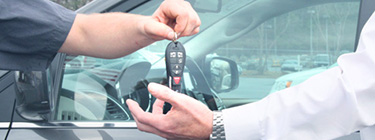Disability and Mobility Aids for Wheelchairs
Disability and mobility aids include a wide range of assistive technology designed to address specific areas of immobility resulting from an injury or a disability. Everyday tasks like reaching a dish on the top shelf or using silverware can be impossible for a person with a disability. Fortunately, these aids can help people with disabilities live independently in every aspect of life, from day-to-day functions to driving.
The largest genre of disability aids is mobility aids, with devices ranging from a simple cane to high-tech power wheelchairs that can move in any direction. Other examples are crutches, walkers, power chairs, manual wheelchairs, mobility scooters and walkers with resting seats.
Mobility aids also include the new and used handicap vans themselves and all the adaptive equipment within them, like wheelchair docks to secure the wheelchair in place, hand controls to allow wheelchair users to drive, wheelchair straps, power and manual wheelchair lifts, transfer seats and wheelchair ramps.
The bathroom can present a world of challenges for a person with disabilities. Items like a raised toilet seat, a walk-in shower, non-slip flooring and a transfer system (with a sling-style seat that runs on a track installed on the ceiling to move a person directly from the wheelchair into the bath or shower) help people with disabilities accomplish tasks able-bodied people take for granted.
Disability aids are essential for the mobility-impaired person to function independently throughout the day. Assistive technology continues to be a groundbreaking field, with ongoing research and development of gadgets like a pocket-sized grip that bears the weight of a person entering and exiting a vehicle and modern power wheelchairs that enable the user to reach a semi-standing position.
Considering the strides in mobility equipment made over the last few decades, we should all be incredibly optimistic about innovations the future holds!


